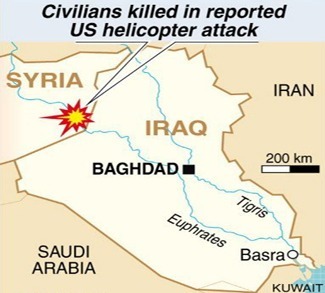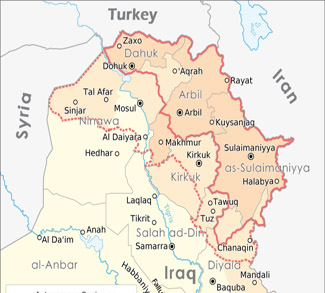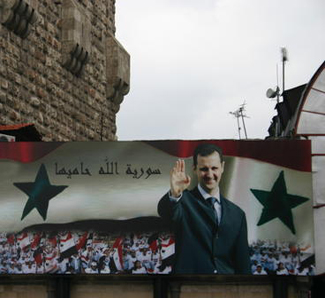Since the 1979 revolution, Iran has counted on the al-Assad regime as its staunchest ally in the region, first under Hafez al-Assad until his death in 2000, and then under his son, Bashar al-Assad.
Iran provided Syria with security guarantees for years and helped thwart Islamic State and other rebel groups from overtaking Damascus during the “hot” period of the Syrian civil war from 2012–2020. Some officials in Tehran estimated that Iran spent as much as $30bn to ensure the Syrian regime didn’t topple during the war.
With combined forces from Iran’s Iranian Revolutionary Guard Corps, Hezbollah, and Russian forces, Iran was able to keep al-Assad in power against Western-backed rebels, even at the expense of Iranian lives.
Or as Mullah Mehdi Taeb, a member of Ayatollah Khamenei’s inner circle, said in 2013, “Syria is the 35th province and a strategic province for us. If the enemy attacks us and seeks to take over Syria or (Iran’s) Khuzestan, the priority lies in maintaining Syria because if we maintain Syria, we can take back Khuzestan. However, if we lose Syria, we won’t be able to hold Tehran.”
Hyperbole or not, without Syrian support in the Arab world, Iranian influence and reach is weakened with the fall of al-Assad’s regime in Syria.
Iran-Syria Cooperation to Support Hezbollah
For its part, Syria provided a safe corridor for Iran to funnel weapons and supplies to Hezbollah in Lebanon, but with the Syrian opposition’s lightning advance in recent days led by Hay’at Tahrir al-Sham (HTS), that corridor through Syria will no longer be a viable option.
In his victory speech after the al-Assad regime officially fell Sunday, HTS leader Abu Mohammed al-Julani criticized the Iranian government, saying that the new Syrian government will not be affected by Iran as an outside actor and that the future of Syria will be defined by the Syrians themselves.
This will leave Hezbollah undersupplied if Tehran can’t find a suitable alternative route.
The Lebanese group is currently struggling after brutal fighting with Israel, and is being forced north of the Litani river in Lebanon due to the terms of its peace deal with Israel.
Hezbollah’s cache of missiles, rockets, artillery, and small arms are in need of critical resupply after months of heavy fighting with the IDF. Without direct Iranian support, its fighters will be less of a presence in the region and in Lebanon itself. It is unclear what the longer-term political and military ramifications are for Hezbollah’s presence and effectiveness in Lebanon.
Israel Expanding its Territory in Lebanon and Syria
Iran must contend not only with its decreased reach in the region, but also with an ever-expanding Israel. According to the Institute for the Study of War, Israel has created a “closed military zone” that reaches several kilometers into southern Lebanon, in a historical echo of the Lebanon civil war. It’s unclear how temporary this zone is, or if this is an IDF maneuver to capture Lebanese land to help widen the buffer between Lebanon and towns in northern Israel.
At the same time, the IDF is reporting it has taken additional land in the Golan Heights, while warning civilians in five towns in the region to “stay home” and not get involved with Israel operations in the strategic area.
Israeli Prime Minister Benjamin Netanyahu said Sunday, “We will not allow any hostile force to establish itself on our border.”
With Israel possibly consolidating gains made in its war with Hezbollah and taking advantage of a weak neighbor in Syria, Iran will have less ability to threaten Israel militarily, either from Lebanon or through the previous Syrian corridor.
Diminishing Support for al-Assad
As Syrian opposition forces closed in on Damascus in recent days, there was much speculation on how and if Iran would send support to al-Assad’s weakening regime. As noted earlier, the massive Hezbollah support and infrastructure that Iran provided Syria with during the pivotal Battle of Aleppo in 2016 was not possible this time around, given Hezbollah’s recent war with Israel.
Hundreds of Iraqi Shiite militia fighters were reported to have entered Syria this weekend, but it was likely a case of too-little, too-late, and it’s unclear if any of these forces ever made it to the battlefield to face the Syrian opposition.
As recently as Friday, senior Iranian officials were said to have promised support for Assad in the form of equipment, missiles, and drones, along with necessary advisors and military forces.
It’s likely that Tehran saw the writing on the wall between Friday and Sunday, however, knowing that al-Assad’s reign over Syria was coming to a swift conclusion.
Speaking in a televised news conference after al-Assad’s fall, Iranian Foreign Minister Abbas Aragchi stated that Iran had spoken to “various parties” within Syria about “the security of our embassy and our consulate in Aleppo, as well as the safety of the holy shrines of Zainab and Ruqayyah.”
Russia, another key Syrian ally, also did not provide resources other than limited air strikes this time around, telling al-Assad that any intervention would be limited. Moscow remains bogged down by the Ukraine war and unable to provide the same level of support it once offered.
It has been widely announced that Bashar al-Assad is in Moscow where he has been granted asylum.
With Iran’s key Arab partners, the al-Assad regime and Hezbollah, either gone or severely downgraded and isolated, Iran’s regional reach and authority is weakened at a time when Israel is looking to make gains. Time will only tell what the latest shakeup in Middle East power will hold for the region.
The views expressed in this article belong to the author(s) alone and do not necessarily reflect those of Geopoliticalmonitor.com.




